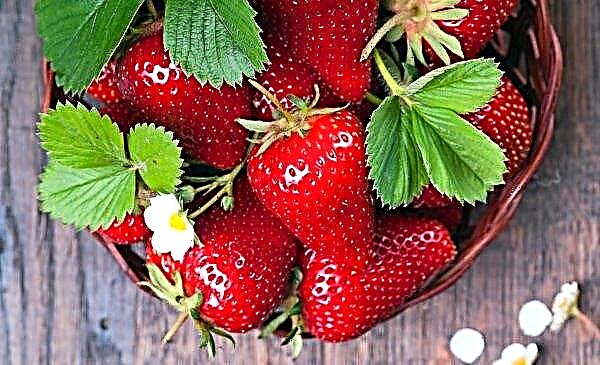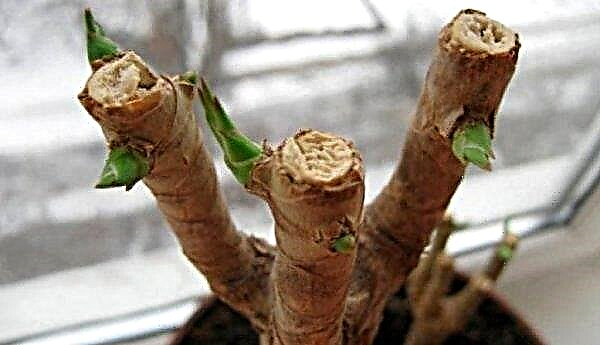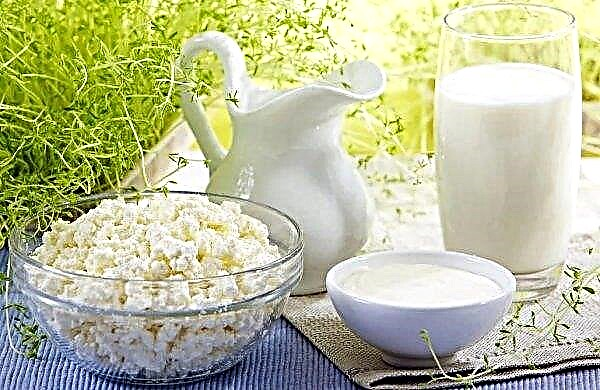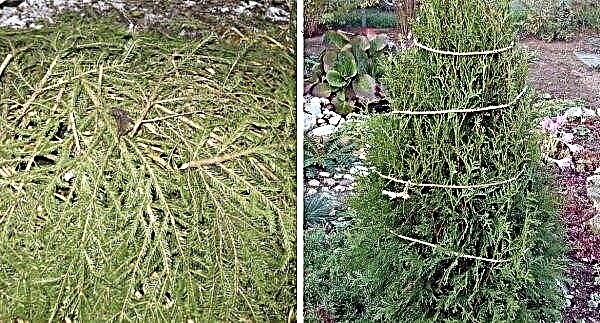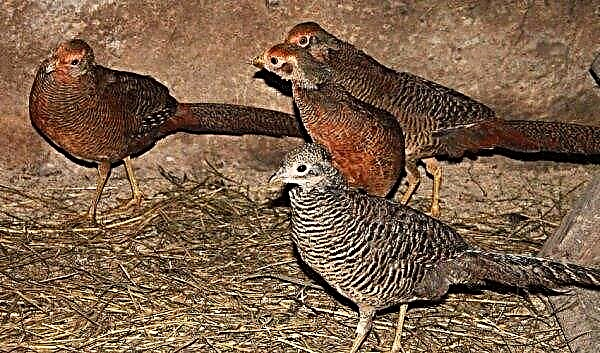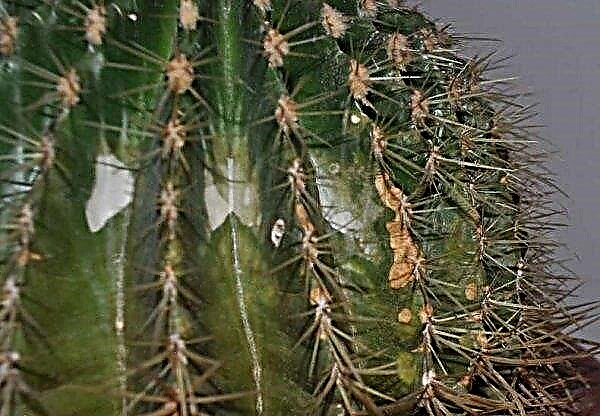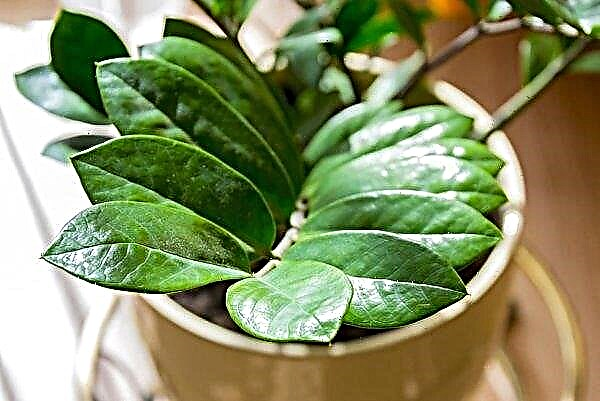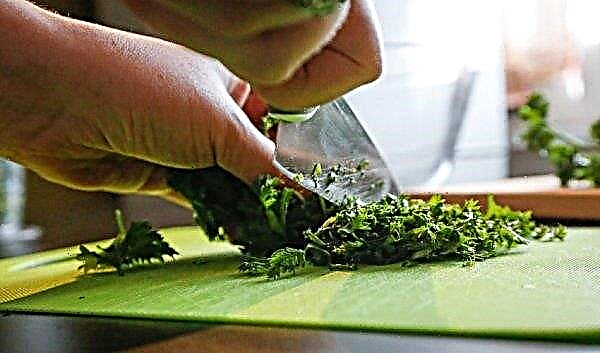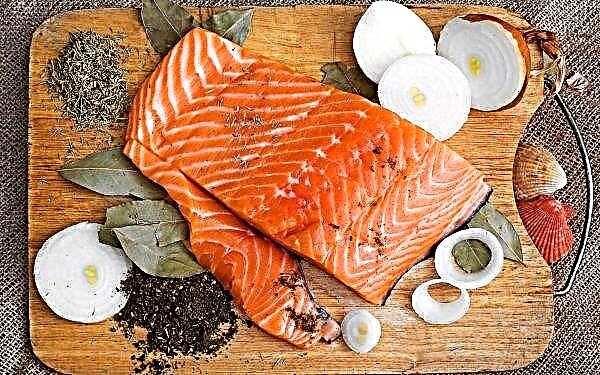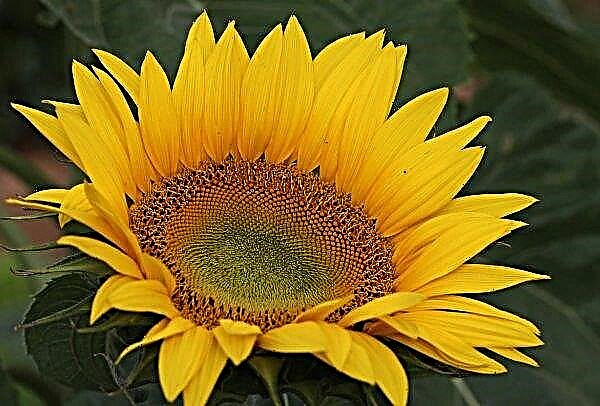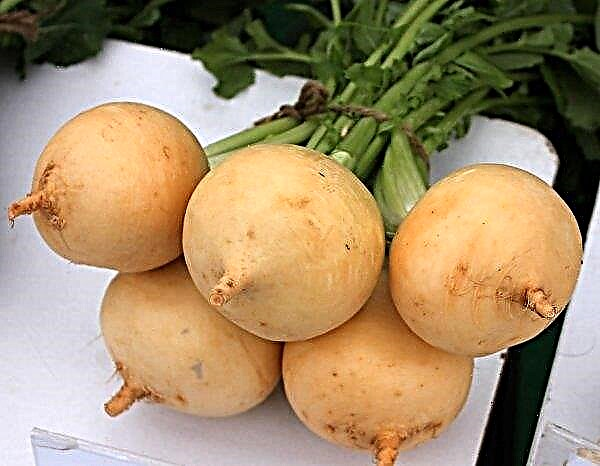Hydrangea can rightfully be called one of the most unique flower species. This representative of the plant world combines several qualities that are beneficial for gardeners, of which cold resistance, long flowering, as well as elegant unique inflorescences can be called the main ones. The article provides a detailed description of panicle Baby Leys hydrangea as one of the most popular flower species, and also considers all the subtleties of growing this plant.
Grade description
Panicle Hydrangea Baby Lace (Hydrangea paniculata baby Lace) is a typical representative of the homonymous genus belonging to the Hortensian family (Hydrangeaceae) This is a small flowering herbaceous shrub, which in natural conditions can be found in Japan, China, as well as in southern Sakhalin.
Did you know? Hydrangea was first cultivated in ancient China, about 1,500 years ago. Thus, this species is considered one of the oldest ornamental plants.
Appearance
It is a kind of low and quite elegant bush. The shoots of the plant are strong, they form a wide and sprawling, but fairly dense crown of a complex structure. The color of the shoots is often all kinds of brown or green-brown tones. The branches are covered with leaves of a saturated green color of elliptical shape with a characteristic sharpening on the edge. The average leaf length is about 9–12 cm. The root system of the shrub is a fibrous type, located in the upper layers of the substrate.
Individual flowers of the plant are quite small, with a diameter of up to 2.5 cm, with four white or cream-white petals. As the vegetation grows, small red-pink inclusions appear on the petals. This helps to make the petals look like lace by the middle of the growing season. This feature has become the main reason for the name Baby Lace, which literally translates as "baby lace". Hydrangea flowers are collected in characteristic large paniculate inflorescences of a wide pyramidal shape.
Bush sizes
The described hydrangea cultivar is quite compact in size: the average height of the flowering bush is about 90–120 cm, and the diameter reaches 100 cm. Baby Lace's inflorescences are very large, up to 30 cm long and 10–15 cm wide.
Did you know? According to archaeological finds, North America is considered the center of hydrangea occurrence. It was on this territory that the shrub formed as a separate species, which happened about 40–70 million years ago.
The timing and duration of flowering
Hydrangea blooms are observed from the beginning of July and up to the first frosts. However, depending on the climatic features of the growing region, these dates may vary somewhat in one direction or another.

Features of cultivation and care
In order to safely cultivate Baby Lace hydrangea in your own area, first of all you need to properly plant this plant. Only painstaking observance of all the subtleties of agricultural planting technology makes it possible to avoid the death of seedlings, and with this, to achieve full flowering of the bush after 2 years.
Planting a flower is carried out throughout May or in October, into small holes 30 × 30 cm in size. To do this, select well-lit areas with diffused light or shaded at noon. Also, the plant should be protected from excessive drafts, so the area near the hedge or other garden buildings is considered the best place for planting a bush.Important! In connection with the spreading crown distance between adjacent hydrangea bushes for group landings should be at least 1.5 m.
The best substrate for the species is considered to be nutritious and moderately water-intensive soil. Loamy soil well fertilized with organic matter (5 kg / m² of humus, peat, compost or rotted manure) is best suited for this.
 In this case, the pH should correspond to a range of 5–6 units, in other cases, the soil must be acidified (for every 10 m² of beds 500 g of iron sulfate should be added).
In this case, the pH should correspond to a range of 5–6 units, in other cases, the soil must be acidified (for every 10 m² of beds 500 g of iron sulfate should be added).
After planting, the seedling in the future must be provided with appropriate care, which will allow to expect long flowering hydrangea throughout the entire vegetative period.
To do this, you must:
- water the bush regularly. The soil on the flower bed must always be slightly moist. To achieve this, watering is performed 3-4 times a week with a calculation of 5-10 l / m² flower beds. During the rainy season, the procedure is carried out on demand;
- at least 1 time in 7-10 days to carry out weeding and loosening of plantings to a depth of about 10 cm;
- 1 time in 2-3 weeks to make top dressing. In spring and summer, any mineral mixtures based on nitrogen compounds are used for this. In the fall (before frost), top dressing with a high content of potassium nitrate is introduced into the soil. Fertilizer concentrations are selected based on the manufacturer's recommendations (located on the packaging);
- be sure to trim the bush. Do this procedure once a year, in the first half of April. During pruning, dry and broken branches are completely removed, and last year's ones are shortened by about a third, leaving no more than 2-3 full buds;
- protect hydrangea from diseases and pests. For this purpose, in early spring and late autumn, the bush should be sprayed with Bordeaux fluid.
Video: hydrangea care
Special attention should be paid to the wintering of the plant. Most often, in the temperate zone, hydrangea winters without any shelters, since this plant is able to withstand seasonal frosts down to –30 ° С. However, with a thin snow cover, shoots can freeze out at the bush, which reduces its decorativeness; therefore, it is highly recommended to prepare the Baby Lace variety for cold weather.
Important! Harbor hydrangea bush polyethylene Not recommended — this can lead to its extinction and partial or complete death of the shoots. Covering material must necessarily be distinguished by increased vapor permeability.
After flowering, the bush should be cleaned of faded inflorescences, and then mulch the trunk circle. To do this, use sawdust, bark or pine needles, seed husks, etc. The thickness of the mulching layer should be at least 10 cm. It is also recommended to wrap the aerial part of the plant. To do this, shoots are covered with burlap, spanbond, etc. After this, the covering material is firmly fixed with a rope.

Landscape design application
The most widely used hydrangea is Baby Lace used for group planting, with the calculation of 3 to 5 bushes per flower bed. However, the variety may also become the central object of the garden in combination with a variety of low annual flowers and ground cover plants. In recent years, these bushes are often used to create small decorative hedges or highlight garden paths, borders. Hydrangea can also be successfully grown in garden containers: in this case, the plant allows you to green the veranda or porch throughout the warm season.

Hydrangea Baby Lace is one of the most striking examples of a universal brightly flowering shrub that allows you to green practically any garden. That is why the use of plants in modern landscape design is quite wide. However, in order to grow a truly spectacular flowerbed, the bush must be surrounded with daily care, including regularly watering and feeding with mineral fertilizers.

